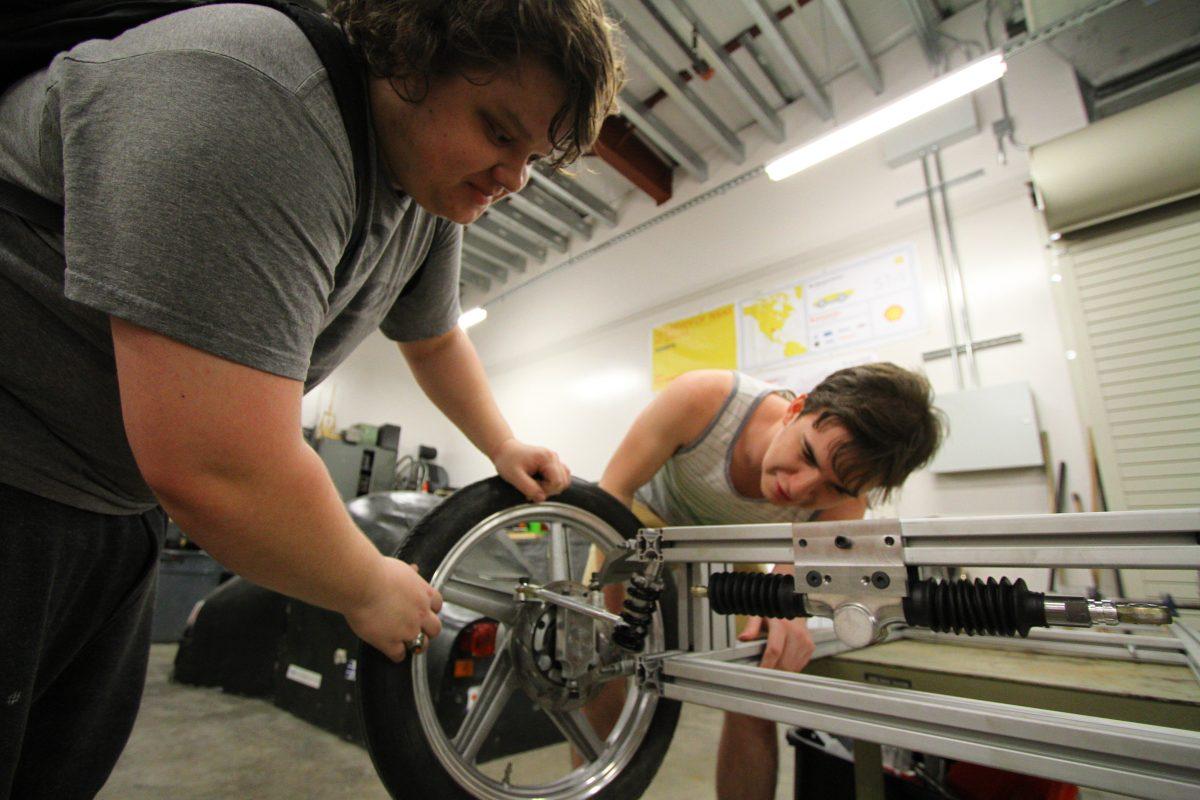Group of engineers looks to improve on last year’s vehicle
Students in the American Society of Mechanical Engineers are finding innovative ways to create fuel-efficient vehicles to compete in the annual Shell Eco-Marathon Americas.
After competing for the first time and placing third in the Marathon last year in Detroit, the students in ASME are tweaking the interior of their vehicle in hopes of increasing their chances of winning.
The competition is held worldwide, with a division in almost every continent. If the team gets second place this year, they will be able to go to London to compete in July.
Within each division are two categories to compete in — Prototype and UrbanConcept. Prototype doesn’t have many restrictions, and the team builds a smaller model of a car where the driver lays flat. UrbanConcept — what UTD ASME is competing in — is where a mix between a go-kart and a car must be built. The rules for UrbanConcept are stricter because there must be more safety features and the interior must be similar to that of a car.
“We started design work in the spring semester of 2014,” said mechanical engineering sophomore Aaron Quigge. “We didn’t actually start building until 2015 fall. This is where we started laying up the body.”
In 2014, ASME officers heard about the competition from a YouTube web series about motor vehicles called “Jay Leno’s Garage.” The officers looked into it, and — as more people expressed interest in the competition as a good project for the organization — the member count grew from 10 people to 15 people and the team started designing for the 2015 competition.
“The competition is just fun in general,” said mechanical engineering sophomore Alec Stuchell. “Mostly I like to work on the design.”
Though the group began preparations for the competition early on, they are still overcoming hurdles in their processes.
“The team structure does need a little more work, which is on me entirely,” Quigge said. “We haven’t laid out a way to get everyone up to date constantly because we’re constantly working. But that’s also a strength in the fact that we are always working. Students don’t have to be in the lab to be involved — they can do computer designing or researching.”
Last year, ASME members reached a fuel efficiency of 138.9 mpg. This year, they are striving to accomplish 500-600 mpg. The students are keeping the body of the vehicle created last year, but are making everything on the inside more efficient and fixing any imperfections.
The team has a chance of winning $2,000 in prize money if they win.
“The whole point of this project isn’t about winning,” Quigge said. “It’s about getting everyone educated. It’s giving everyone a chance to do engineering work without having to go do an internship or a job. We do everything from design, fabrication, tests and redesign. It allows them insight on what they’re going to be experiencing in the real world.”
The way the cars are powered isn’t necessarily what makes them efficient — it’s their design. From when the team first started redesigning in the fall, they meet regularly on Wednesdays for two hours for any updates, and Saturdays to do design work — which can range from five hours to all day. However, as times cut close to the competition, members will spend almost all their time in the lab working to finish the car.
“(Last year), it was the weekend before the competition, the car wasn’t done yet, and we spent 100 hours from Friday until Tuesday finishing the car,” Stuchell said.
Currently, the members of ASME are already thinking ahead for next year’s competition while simultaneously finishing up this year’s car.
“Depending on how this year goes, we are looking at keeping this car and expanding and starting designing on a new car this summer,” Quigge said. “Hopefully, we will be competing with two cars next year, not just one.”











